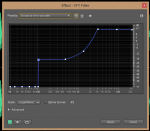Swimn'n Bird
New member
I use Audition but it might not make much of a difference if anyone knows how to make vocals sound similar to thisThat would be so cool to me, I've been trying to use FTT's (pardon me if that's the wrong acronym, I first used them today) I tried using like that telephone preset, it seems like a step in the right direction but a few miles off maybe.Any help is appreciated!Also I want the vocals to cut through like they do here, ya know?
Last edited:


